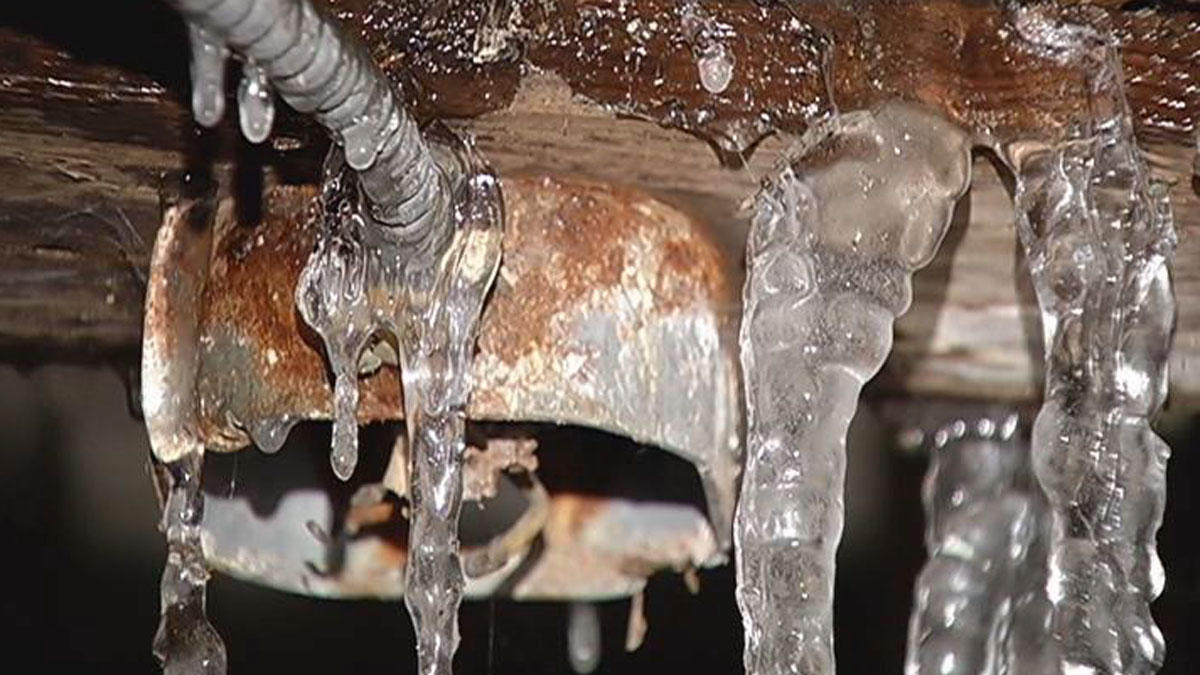Tips to Keep Pipes from Freezing Damage: Crucial Advice
Tips to Keep Pipes from Freezing Damage: Crucial Advice
Blog Article
Right here in the next paragraphs you'll find more sensible help and advice concerning Winter Plumbing Precautions: Preventing Frozen Pipes.

Cold weather can damage your pipes, specifically by freezing pipes. Right here's exactly how to prevent it from occurring and what to do if it does.
Intro
As temperature levels decrease, the danger of frozen pipes boosts, potentially leading to pricey repairs and water damage. Recognizing just how to avoid icy pipes is crucial for home owners in cold climates.
Understanding Icy Pipelines
What causes pipes to ice up?
Pipes freeze when revealed to temperatures below 32 ° F (0 ° C) for expanded periods. As water inside the pipelines ices up, it expands, putting pressure on the pipe wall surfaces and possibly creating them to break.
Threats and problems
Icy pipelines can bring about water system disruptions, building damage, and costly repair work. Ruptured pipelines can flood homes and cause considerable architectural damages.
Indications of Frozen Piping
Recognizing frozen pipes early can stop them from bursting.
How to identify icy pipelines
Seek lowered water flow from taps, uncommon odors or sounds from pipelines, and visible frost on exposed pipelines.
Avoidance Tips
Insulating vulnerable pipelines
Cover pipes in insulation sleeves or make use of warm tape to safeguard them from freezing temperature levels. Focus on pipelines in unheated or exterior areas of the home.
Heating strategies
Keep indoor rooms sufficiently heated up, particularly areas with plumbing. Open up cabinet doors to enable cozy air to flow around pipelines under sinks.
Securing Exterior Plumbing
Yard hoses and exterior faucets
Disconnect and drain garden pipes before winter. Set up frost-proof faucets or cover outdoor faucets with insulated caps.
What to Do If Your Pipes Freeze
Immediate actions to take
If you think frozen pipes, maintain faucets open up to soothe pressure as the ice melts. Use a hairdryer or towels taken in warm water to thaw pipes slowly.
Long-Term Solutions
Architectural changes
Take into consideration rerouting pipelines away from exterior walls or unheated areas. Include added insulation to attic rooms, cellars, and crawl spaces.
Upgrading insulation
Invest in top notch insulation for pipelines, attic rooms, and wall surfaces. Proper insulation aids maintain consistent temperature levels and minimizes the risk of frozen pipelines.
Final thought
Protecting against icy pipelines requires proactive procedures and fast feedbacks. By comprehending the causes, indications, and safety nets, home owners can secure their plumbing throughout cold weather.
6 Proven Ways to Prevent Frozen Pipes and Protect Your Home
Disconnect and Drain Garden Hoses
Before winter arrives, start by disconnecting your garden hoses and draining any remaining water. Close the shut-off valves that supply outdoor hose bibs and leave the outdoor faucet open to allow any residual water to drain. For extra protection, consider using faucet covers throughout the colder months. It’s also important to drain water from any sprinkler supply lines following the manufacturer’s directions.
Insulate Exposed Pipes
Insulating your pipes is an effective way to prevent freezing. Pipe insulation is readily available at home improvement stores and is relatively inexpensive. Pay close attention to pipes in unheated areas such as the attic, basement, crawl spaces, or garage. Apply foam insulation generously to create a buffer against the cold. You can also wrap your pipes in heat tape or thermostat-controlled heat cables for added warmth.
Seal Air Leaks
Inspect your home for any cracks or openings that could let in cold air. Seal any holes around the piping in interior or exterior walls, as well as the sill plates where your home rests on its foundation. Additionally, make sure to keep your garage door closed unless you’re entering or exiting. Leaving it open creates a significant air leak that can lead to frozen pipes.
Allow Warm Air Circulation
During cold snaps, it’s essential to allow warm air to circulate evenly throughout your home. Leave interior doors ajar to promote better airflow. Open kitchen and bathroom cabinets to help distribute heat consistently around the rooms. If you have small children or pets, be sure to remove any household chemicals or potentially harmful cleaners from open cabinets for safety.
Let Faucets Drip
A small trickle of water can make a big difference in preventing ice formation inside your pipes. When temperatures drop significantly, start a drip of water from all faucets served by exposed pipes. This continuous flow helps prevent the water from freezing. Additionally, running a few faucets slightly can relieve pressure inside the pipes, reducing the chances of a rupture if the water inside does freeze.
https://choateshvac.com/6-proven-ways-to-prevent-frozen-pipes-and-protect-your-home/

I came across that post on Helpful Tips to Prevent Frozen Pipes this Winter when perusing the web. Enjoyed our article? Please share it. Help other people locate it. I cherish reading our article about Prevent Frozen Pipes .
More Details Report this page